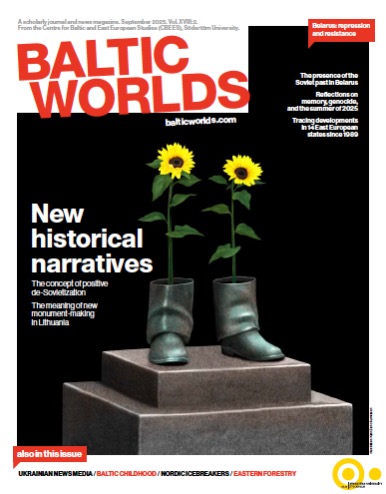Edward Kasinec and Nathaniel Knight
Edward Kasinec is a Research Associate, Harriman Institute, Columbia University and, since 2014 Visiting Fellow, Hoover Institution, Stanford University. His career includes service as Reference Librarian/Archivist and Staff Advisor in Exhibitions in several prestigious institutions. Since 1969, Kasinec has published more than two hundred refereed articles and books.
Nathaniel Knight is a Professor of History and Chair of the History Department at Seton Hall University. Has published extensively on issues of ethnicity, race and the history of the human sciences in Imperial Russia.
view all contributors
Articles by Edward Kasinec and Nathaniel Knight
-
The Fourth Stakeholders’ meeting gathered more than 400 delegates from government, industry, and labor, as well as consumer, environmental, health, and animal welfare groups and non-governmental organizations. The hottest discussion focused on the issue of information sharing.
-
Working-class neighborhoods in post-communist countries have often been depicted as unable to adapt to the new economic situation. Stefan Bouzarovski has studied urban development and reached the conclusion that residents in working-class areas may, in fact, display considerable resilience and adaptability to the new housing market. One coping mechanism has been to enlarge apartments by building so-called vertical building extensions.
-
+ Oddmund Løkensgard Hoel, Målreising og modernisering i Noreg 1885–1940, [The New Language Movement and Modernization in Norway 1885–1940], Trondheim: Noreg’s University of Science and Technology, NTNU, 2009, 589 pages
-
+ Michail Kasianov, Bez Putina: Politicheskiye dialogi s Yevgenyem Kiselyovym, [Without Putin: Political Dialogues with Yevgeny Kiselyov] Moscow: Novaya gazeta 2009, 320 pages
-
+ Estonian Life Stories, Edited and translated by Tiina Kirss, Compiled by Rutt Hinrikus Budapest: Central European University Press 2009, 539 pages
-
+ Julia Obertreis & Anke Stephen (eds.) Erinnerungen nach der Wende: Oral History und (post)sozialistische Gesellschaften, Essen: Klartext Verlag 2009, 401 pages.
-
In this interview professor Birgitta Almgren discusses her study on Nazi-German infiltration in Sweden and the offshoots, in Cold War Sweden, of the GDR’s policies. She is now requesting that the Swedish law courts make it possible for her to continue her research by granting her access to the so-called Rosenholz files.
In a comment professor Åmark argues for a release of the Stasi-material.
-
On the changes in suicide rates in Eastern Europe after the transformations of 1990. Here, a large number of individual studies are summarized, and the results are compared with previous research on transitional societies undergoing rapid change.
-
In the Soviet Union, maps of reality as it should be were published, and with no information about sensitive data. The manipulation of maps did not, however, disappear with the fall of Communism.
-
For millennia there has been plenty of amber in the blue clay around the coasts of the Baltic Sea. These coveted stones, which were considered to be have magical properties, were sent via the rivers of Europe all the way to Rome to be traded.
-

 Issue 2025, 2:
Issue 2025, 2: